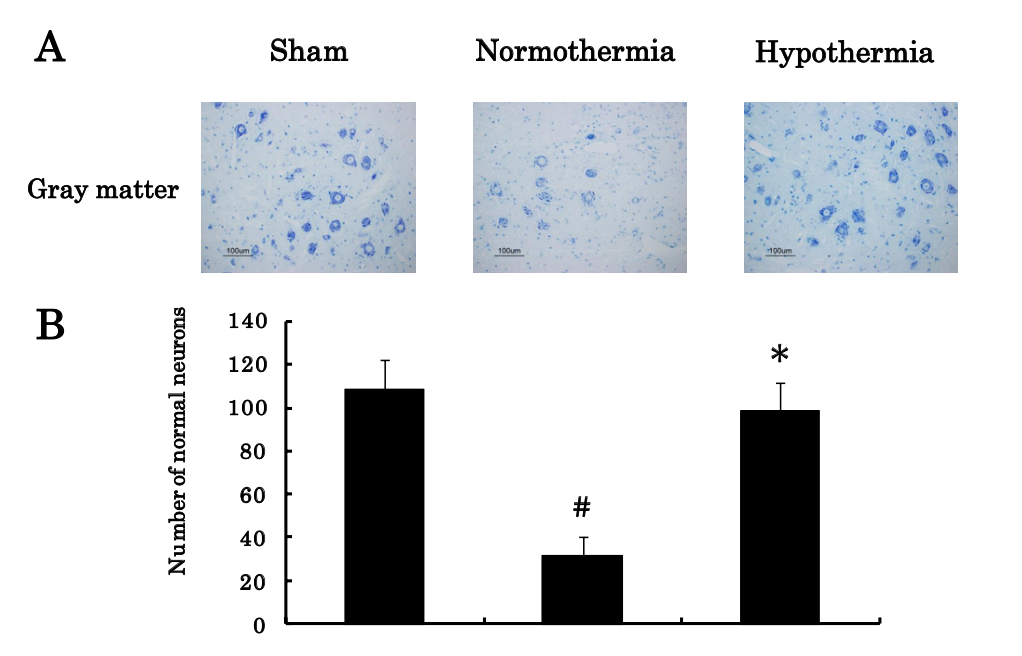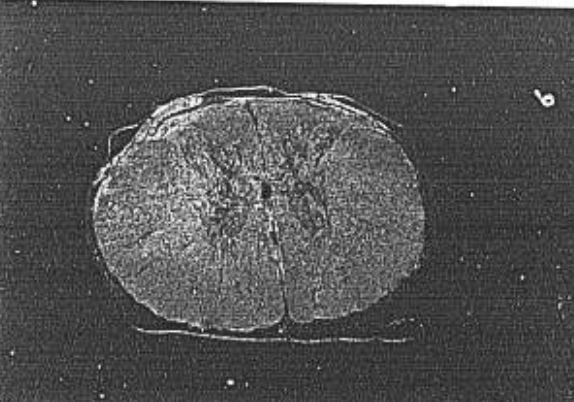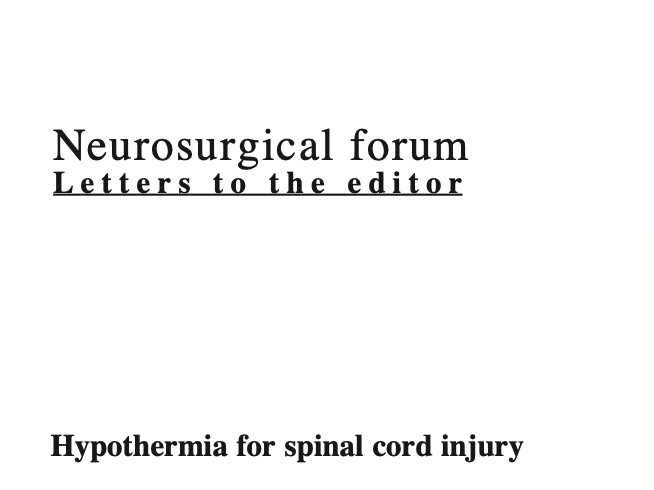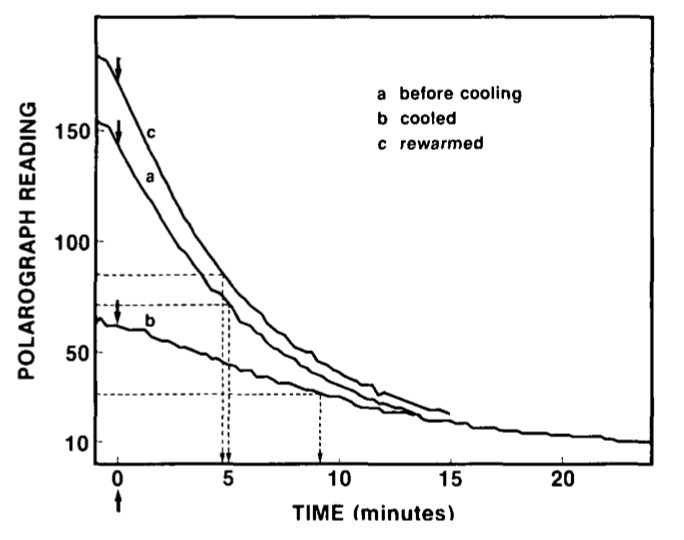Neuroprotection following mild hypothermia after spinal chord ischemia in rats

Rats were randomly divided into hypothermia (1ºC reduction in body temperature), normothermia, and sham groups. Hypothermia was induced 15 minutes before spinal cord ischemia and maintained during ischemia. Animals were then rewarmed to normothermia. Hind limb motor function was assessed at 2, 7, 14, 21, and 28 days after reperfusion. Hypothermia significantly improved hind limb function at all assessments compared to normothermia and reduced neuronal death.
Effects of a Contusion Injury on Spinal Cord Blood Flow in the Sheep.
The effect of experimental trauma on the blood flow in the central and peripheral regions of the sheep’s spinal cord was studied using a radioactive microsphere technique. In seven out of eight animals, a progressive fall in blood flow occurred in both the peripheral and central regions of the cord within 2 hours following injury. Early hypothermic intervention could have helped sustain neural function.

Hypothermia for spinal cord injury

Spinal cord injury affects about 11,000 people each year. There are limited therapeutic that are currently available for these injuries. Recent studies using clinically relevant animal models of spinal cord injury have reported the efficacy of therapeutic hypothermia in terms of promoting long-term behavioral improvement and reducing histopathological damage. Moderate hypothermia (33°C) introduced systemically by intravascular cooling strategies appears to be safe and provides some improvement of long-term recovery of function.
Microglia inhibition is a target of mild hypothermic treatment after the spinal cord injury
Increase of microglia was substantially inhibited at 48 and 72 h after compression in the hypothermic rats. The motor function of the hypothermic rats improved at 48 and 72 h after the compression, whereas no improvement was seen in the normothermic rats. The amount of TNF-alpha in the compressed portion of the spinal cord was lower in hypothermic rats compared with normothermic rats throughout the experiment.

The Effects of Local Cooling on Canine Spinal Cord Blood Flow

The internal spinal cord blood flow was measured in dogs at the site of local cooling. Blood flow decreased to 50% (16ºC) of the normothermic values during cooling of the cord. Upon ending of cooling internal blood flow rapidly returned to normal values.
